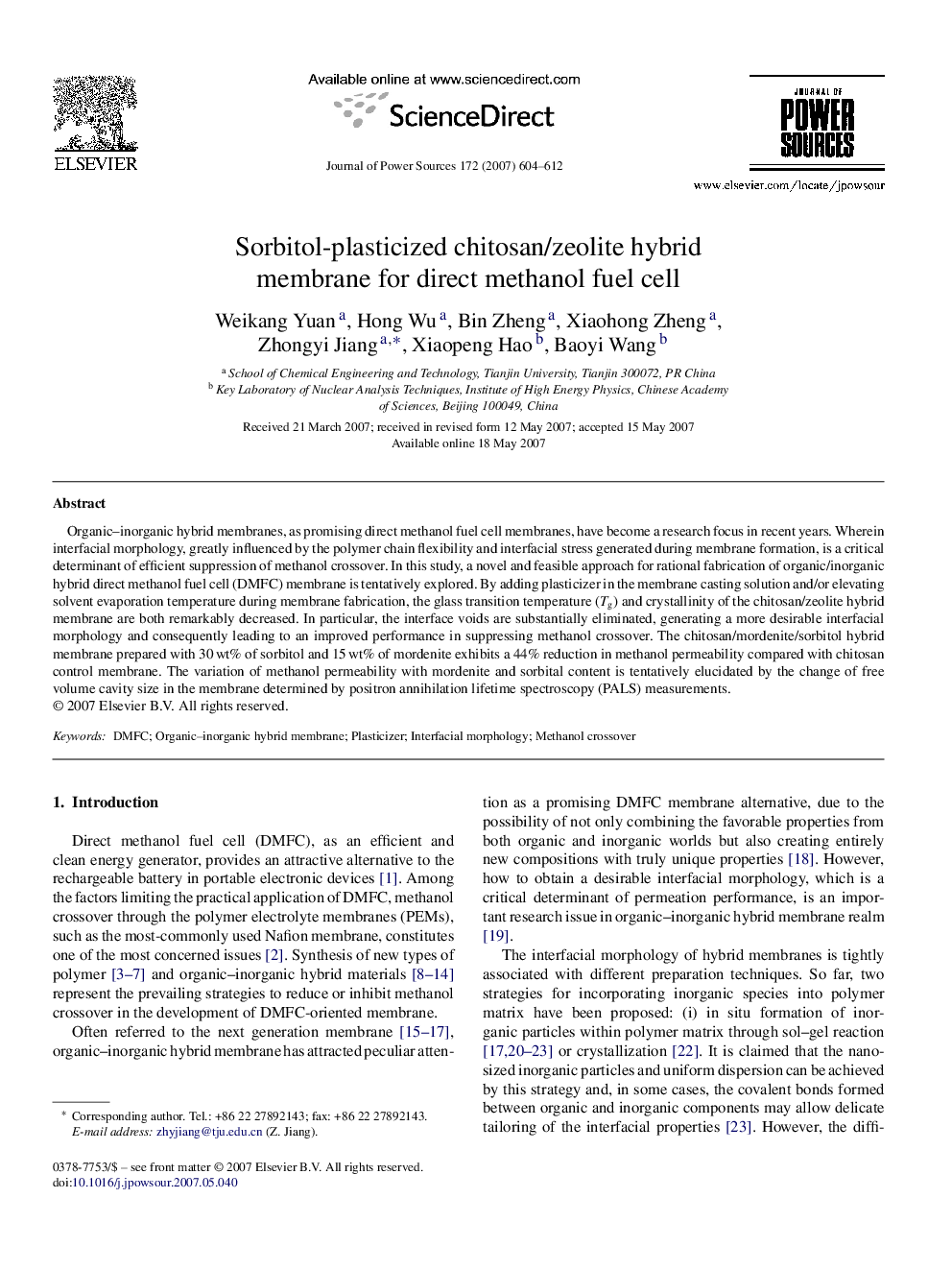| Article ID | Journal | Published Year | Pages | File Type |
|---|---|---|---|---|
| 1286179 | Journal of Power Sources | 2007 | 9 Pages |
Organic–inorganic hybrid membranes, as promising direct methanol fuel cell membranes, have become a research focus in recent years. Wherein interfacial morphology, greatly influenced by the polymer chain flexibility and interfacial stress generated during membrane formation, is a critical determinant of efficient suppression of methanol crossover. In this study, a novel and feasible approach for rational fabrication of organic/inorganic hybrid direct methanol fuel cell (DMFC) membrane is tentatively explored. By adding plasticizer in the membrane casting solution and/or elevating solvent evaporation temperature during membrane fabrication, the glass transition temperature (Tg) and crystallinity of the chitosan/zeolite hybrid membrane are both remarkably decreased. In particular, the interface voids are substantially eliminated, generating a more desirable interfacial morphology and consequently leading to an improved performance in suppressing methanol crossover. The chitosan/mordenite/sorbitol hybrid membrane prepared with 30 wt% of sorbitol and 15 wt% of mordenite exhibits a 44% reduction in methanol permeability compared with chitosan control membrane. The variation of methanol permeability with mordenite and sorbital content is tentatively elucidated by the change of free volume cavity size in the membrane determined by positron annihilation lifetime spectroscopy (PALS) measurements.
